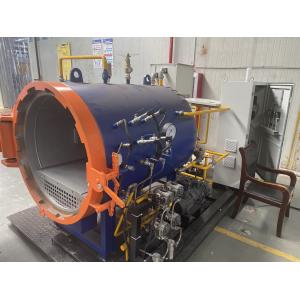

Add to Cart
Analysis of the working principle and application field of the Composite Autoclave
The working principle of a Composite Autoclave involves the use of
heat and pressure to achieve a specific outcome. The tank is
designed to withstand high temperatures and pressures, ensuring the
safety of the process.
The Composite Autoclave consists of a sealed container made of a
durable material such as steel. Inside the tank, a heating element
is present, which can be electric or fueled by gas. The heating
element is responsible for raising the temperature inside the tank
to the desired level.
The tank is also equipped with a pressure control system, which
allows the operator to adjust and maintain the desired pressure.
This system ensures that the pressure inside the tank remains
within safe limits and prevents any potential accidents.
The application areas of Composite Autoclaves are diverse and can
be found in various industries. One common application is in the
manufacturing of composite materials. The tank is used to apply
heat and pressure to the composite materials, allowing them to bond
together and form a strong and durable product.
Composite Autoclaves are also used in the food industry for
processes such as sterilization and pasteurization. The high
temperature and pressure inside the tank help eliminate bacteria
and other harmful microorganisms, ensuring the safety and quality
of the food products.
In the chemical industry, Composite Autoclaves are utilized for
reactions that require elevated temperatures and pressures. These
tanks enable the production of various chemicals and compounds by
providing the necessary conditions for the reaction to occur.
Overall, Composite Autoclaves play a crucial role in industries
where heat and pressure are required to achieve specific outcomes.
They provide a safe and controlled environment for processes that
involve high temperatures and pressures, ensuring efficient and
reliable operations.
